UPSC Daily Current Affairs- 6th April 2025 | Current Affairs & Hindu Analysis: Daily, Weekly & Monthly PDF Download
GS2/ International Relations
6th BIMSTEC Summit

Why is it News?
The Prime Minister of India took part in the 6th BIMSTEC Summit held in Thailand.
- The theme of the summit was "BIMSTEC: Prosperous, Resilient, and Open," aiming to enhance regional cooperation and tackle important challenges.
Key Highlights of the 6th BIMSTEC Summit
- Vision 2030 Document: The Summit approved the Summit Declaration and Bangkok Vision 2030, which outlines a plan for regional prosperity. This plan emphasizes economic integration, resilience to global challenges, and collaboration in infrastructure and technology.
Key Initiatives Announced by India
- BIMSTEC Centres of Excellence: India proposed setting up BIMSTEC Centres of Excellence focusing on areas like Disaster Management, Sustainable Maritime Transport, Traditional Medicine, and Research and Training in Agriculture.
- BODHI Program: India introduced the BODHI Program for skill development, offering training and scholarships for various professionals across BIMSTEC nations.
- Cancer Care Capacity Building: India suggested a capacity-building program for cancer care in the BIMSTEC region.
- Chamber of Commerce and Business Summit: Proposals were made to establish a BIMSTEC Chamber of Commerce and host an annual BIMSTEC Business Summit to enhance regional economic integration.
- People-to-People Linkages: India announced various initiatives to strengthen cultural and people-to-people connections, including the BIMSTEC Athletics Meet (2025), First BIMSTEC Games (2027), and BIMSTEC Traditional Music Festival.
What is BIMSTEC?
- About: BIMSTEC stands for the Bay of Bengal Initiative for Multi-Sectoral Technical and Economic Cooperation. It is a regional organization made up of seven member countries: Bangladesh, Bhutan, India, Myanmar, Nepal, Sri Lanka, and Thailand.
- Objective: The aim of BIMSTEC is to promote various forms of technical and economic cooperation among the countries in the Bay of Bengal region.
- Origin: BIMSTEC was established in 1997 when the Bangkok Declaration was adopted. Initially, it included four members and was called BIST-EC, focusing on economic cooperation among Bangladesh, India, Sri Lanka, and Thailand. Myanmar joined in 1997, leading to the renaming of the group to BIMST-EC. With the addition of Nepal and Bhutan in 2004, the name was changed to BIMSTEC.
- Significance: The BIMSTEC countries together have a population of 1.7 billion, which is about 22% of the world’s total, and a combined GDP of around USD 5.2 trillion as of 2023.
What is the Significance of BIMSTEC?
- Alignment with Act East Policy: BIMSTEC is in line with India’s Act East Policy, which aims to enhance India’s trade and security presence in the Indian Ocean and Indo-Pacific regions.
- Alternative to SAARC: BIMSTEC has become a preferred platform for regional cooperation, serving as a viable alternative to the South Asian Association for Regional Cooperation (SAARC) in South Asia.
- Platform for Regional Cooperation: BIMSTEC provides a crucial platform for fostering deeper cooperation among South and Southeast Asian countries, especially in areas related to security and Humanitarian Assistance and Disaster Relief (HADR) management. It also offers a means to balance China’s growing influence in the region, particularly through China’s Belt and Road Initiative (BRI).
- Promotion of Intangible Culture: India’s initiatives, such as the establishment of the Centre for Bay of Bengal Studies (CBS) at Nalanda University, aim to preserve the region’s intangible cultural heritage. BIMSTEC facilitates regional collaboration and cultural exchange, contributing to this goal.
Conclusion
The 6th BIMSTEC Summit advanced regional cooperation, focusing on economic integration, disaster resilience, and cultural ties. India’s leadership through initiatives like Centres of Excellence and skill development programs strengthens the region’s future prospects. As BIMSTEC celebrates its 30th anniversary in 2027, the Summit’s outcomes foster a more prosperous and resilient Bay of Bengal region.
GS3/ Economy
Reforming Indian Railways
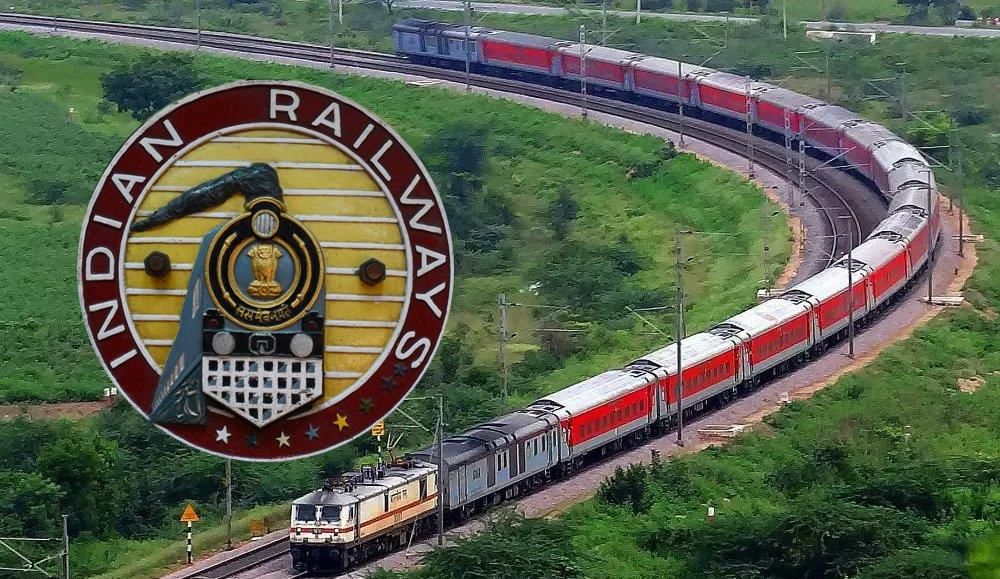 Why in News?
Why in News?
The recent audit report by the Comptroller and Auditor General (CAG) has raised several concerns regarding the functioning of Indian Railways, as highlighted in the report on the Ministry of Railways.
Key Facts about Indian Railways
- India boasts the fourth-largest railway network in the world, spanning over 65,000 kilometers.
- In 2022, Indian Railways transported 8 billion passengers and 1.4 billion tons of freight. By 2050, it is anticipated to account for 40% of global rail activity.
- The government plans to invest USD 750 billion in the railway sector by 2030, part of a larger USD 1.4 trillion infrastructure investment from 2019 to 2023.
- 100% Foreign Direct Investment (FDI) is allowed in the railway sector, encouraging global participation and investment.
- Innovations such as KAVACH, a Train Collision Avoidance System, are set to be deployed over 37,000 kilometers of railway lines.
- Vande Bharat trains are being introduced, featuring rapid acceleration, automatic doors, CCTV surveillance, bio-toilets, GPS information systems, and onboard infotainment.
- In the financial year 2023-24, Indian Railways is projected to earn USD 32.18 billion in traffic revenue, constituting 99.8% of its total income, reflecting strong operational efficiency and public reliance.
- Future plans include the development of high-speed rail corridors, upgrading signaling and telecom systems, enhancing digitalization for predictive maintenance and asset management, and integrating intermodal transport systems.
- Indian Railways is also committed to achieving net zero carbon emissions by 2030, with initiatives like running hydrogen trains as part of the Hydrogen for Heritage program.
Significance of Indian Railways
- Indian Railways is a crucial part of India’s transport backbone, offering affordable and reliable travel, which fosters economic integration across the country.
- It facilitates the movement of essential goods such as coal, iron ore, cement, and agricultural products, which are vital for industrial operations.
- The establishment of Dedicated Freight Corridors (DFCs) is expected to reduce logistics costs, enhancing the competitiveness of Indian manufacturing on a global scale.
- With a workforce of over 1.2 million, Indian Railways is the ninth-largest employer in the world, contributing significantly to job creation.
- Railways play a key role in connecting rural areas with urban markets, improving access to education, healthcare, and employment opportunities in less developed regions.
- The use of energy-efficient locomotives, green bio-toilets, and electrified routes demonstrates Indian Railways’ commitment to environmental sustainability.
- Strategic rail links in sensitive regions, such as the North-East, enhance national security and facilitate rapid mobilization of resources.
Concerns Associated with Indian Railways
- High Operating Ratio: The operating ratio for 2024-2025 is projected at Rs 98.2, an improvement from Rs 98.7 in 2023-2024 but worse than Rs 97.8 in 2016. A higher operating ratio, indicating the amount spent to earn Rs 100, reduces resources for capital expenditure and increases reliance on budgetary support and Extra-Budgetary Resources.
- Slow Infrastructure Development: Many Dedicated Freight Corridors (DFCs) proposed in 2005 are not yet operational. The eastern DFC is fully operational, and the western DFC is nearing completion, while the east coast, east-west, and north-south sub-corridor DFCs are still in the planning stage. The Mumbai-Ahmedabad bullet train project has also been delayed from 2023 to 2028 due to land acquisition issues.
- Inadequate Safety Technologies: The KAVACH system, designed to prevent train collisions through automated braking and alerts, has a limited rollout, with installation on only 1,465 route kilometers as of February 2024, which is just 2% of the total railway network.
- Slow Journeys: Mail and express trains are currently running at an average speed of 50-51 kmph, falling short of the targets set under Mission Raftaar, which aims to double freight train speeds and increase passenger train speeds by 25 kmph within five years.
Recommendations for Improvement
Various committees have made recommendations to improve the functioning and safety of Indian Railways:
- Rakesh Mohan Committee (2010): Suggested the development of long-distance and inter-city transport, including High-Speed Rail corridors, and the establishment of a National Transport Infrastructure Finance to ensure neutrality regarding mobility, sustainability, and inclusion goals.
- Kakodkar Committee (2012): Recommended the establishment of a statutory Railway Safety Authority and proposed a non-lapsable Rashtriya Rail Sanraksha Kosh (RRSK) of Rs 1 lakh crore over 5 years for safety-related projects.
- Bibek Debroy Committee (2014): Advocated for the creation of a Railway Infrastructure Authority to assist the government in making informed decisions on promoting competition, efficiency, and economy, and suggested outsourcing non-core activities to increase efficiency and reduce operational load on Indian Railways.
Way Forward
- Broaden Freight Portfolio: Focus on specialized freight solutions for high-value and sensitive commodities such as pharmaceuticals, electronics, and perishable goods to enhance efficiency and profitability.
- High-Speed Railways: Upgrade railway infrastructure to support higher speeds of 160-200 km/h, making rail a competitive alternative to air travel on key intercity routes and improving overall service quality.
- Multimodal Logistics Infrastructure: Prioritize the development of integrated multimodal logistics parks with automation, smart inventory systems, and seamless intermodal transfers to enhance operational efficiency and reduce turnaround times.
- Private Sector Participation: Encourage greater private sector involvement in areas such as rolling stock, catering, and logistics to improve service quality and operational efficiency. Competitive bidding on busy routes can further enhance efficiency and reduce the government’s operational burden.
GS3/ Environment and Ecology
GI Tag to Tomato Chilli and Kannadippaya
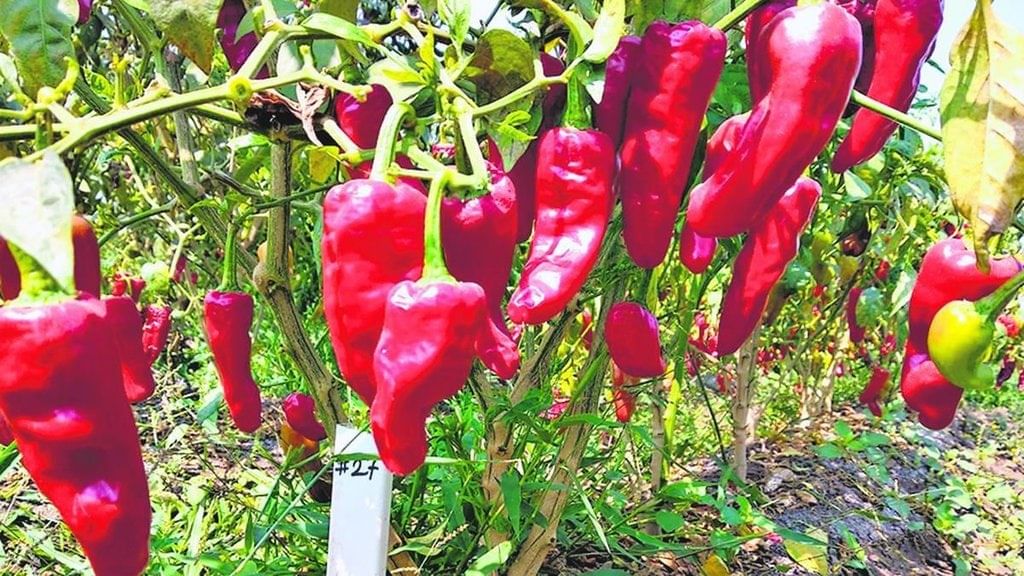 Why in News?
Why in News?
Telangana’s Warangal Chapata Chilli (Tomato Chilli) and Kerala’s tribal handicraft Kannadippaya have received the Geographical Indication (GI) tag, contributing to India’s GI registry, which now includes over 600 products.
Geographical Indication (GI) Tag
- About:. GI tag is a name or sign used on certain products that correspond to a specific geographical location or origin.
- The GI tag ensures that only authorised users or those residing in the geographical territory are allowed to use the popular product name.
- It also protects the product from being copied or imitated by others.
- A registered GI is valid for 10 years and can be renewed.
- GI registration is overseen by the Department for Promotion of Industry and Internal Trade under the Ministry of Commerce and Industry.
Legal Framework:
- Geographical Indications of Goods (Registration and Protection) Act, 1999
- WTO Agreement on Trade-Related Aspects of Intellectual Property Rights (TRIPS).
What are the Key Facts About Warangal Chapata Chilli?
- About: It is Telangana’s 18th GI-tagged product and the third agricultural GI, after Banaganapalli Mango and Tandur Red Gram.
- Features: It is known for its bright red colour and round tomato-like shape.
- The chilli is less spicy but lends a bright red colour with extensive flavour due to its capsicum oleoresin properties (anti-obesogenic, antioxidant, anti-inflammatory, and neuroprotective properties).
- Types: It exists in three fruit types: Single Patti, Double Patti, and Odalu.
- Cultivation: The Warangal Chapata is under cultivation in the villages of Nagaram of Jammikunta mandal for more than 80 years while Nadikuda village and mandal could be the oldest source.
- Its unique characteristics can be attributed to the red and black soil of the region.
- The area's unique soil, water, and weather make it hard to grow this crop anywhere else.
What are the Key Facts About Kannadippaya?
- About: The recognition makes Kannadippaya the first tribal handicraft product from Kerala to receive the GI tag.
- Origin: The craft is primarily preserved by the Oorali, Mannan, Muthuva, Malayan, and Kadar tribal communities and by the Ulladan, Malayarayan, and Hill Pulaya artisans in Idukki, Thrissur, Ernakulam, and Palakkad districts.
- In the past, Kannadippaya was once presented to kings by tribal communities as a mark of honour.
- Key Features: The product derives its name, which literally means mirror mat, from its unique reflective pattern
- It is made from the soft inner layers of reed bamboo (Teinostachyum wightii), the mat is known for its unique properties like providing warmth during winter and cooling effects in summer.
GS3/ Science and Technology
Chandrayaan’s ChaSTE
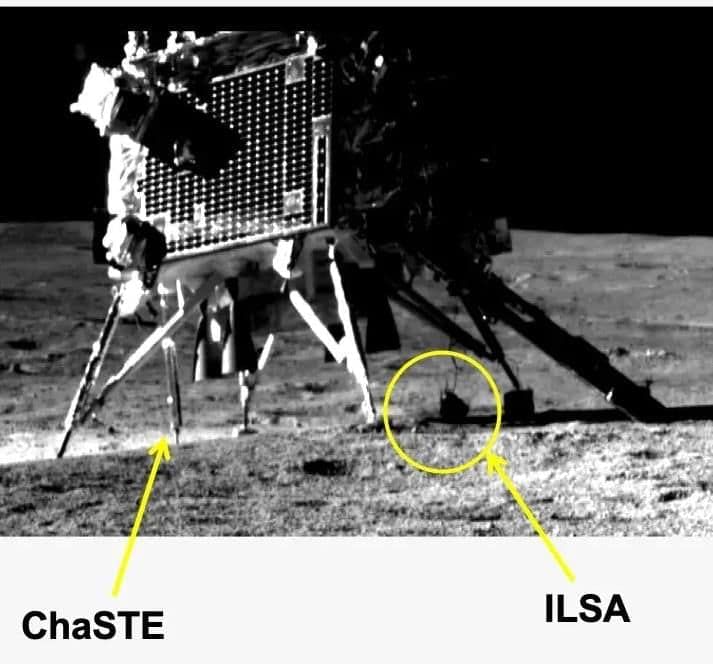 Why in News?
Why in News?
India's Chandrayaan-3 mission’s ChaSTE (Chandra’s Surface Thermophysical Experiment) became the first-ever instrument to successfully measure subsurface temperature near the Moon’s south pole.
- Instrument Details: The ChaSTE probe is equipped with 10 temperature sensors placed 1 cm apart along its needle. Instead of using a hammering mechanism, ChaSTE employs a rotation-based deployment system to gather data from the lunar surface.
- Depth and Data Collection: The probe was able to penetrate up to 10 cm into the lunar surface and collected thermal data until September 2023. This data revealed the presence of more water ice near the lunar south pole than previously estimated, a significant finding for future lunar explorations.
- Mechanism Success: ChaSTE's success is largely attributed to its innovative rotating probe mechanism, which proved to be more effective than the hammering technique used by earlier missions to deploy thermal probes.
- Previous Mission Challenges:ESA's Philae Lander (2014): The Philae lander, part of a European Space Agency mission, attempted to deploy the MUPUS (Multi-Purpose Sensors for Surface and Subsurface Science) thermal probe on comet 67P. However, due to an awkward landing, the probe could not be deployed, and valuable subsurface data was missed. NASA’s InSight (2018): NASA's InSight mission on Mars faced similar challenges with its Heat Flow and Physical Properties Package (HP3) instrument. The HP3 was designed to gather subsurface data on Mars, but mechanical issues prevented it from functioning as intended, leading to a failure in collecting crucial thermal data.
GS3/ Economy
India’s Coal Boom

Why in News?
India reached a significant milestone by producing over one billion tonnes (BT) of coal in March 2024-25, surpassing the previous year’s record of 997.83 million tonnes (MT).
About
- India holds the fifth-largest coal reserves globally and is the second-largest consumer of coal.
- The country relies heavily on coal, which makes up 55% of its energy mix and is responsible for over 74% of electricity generation.
Growth in Coal Production and Dispatch
- In the financial year 2024-25, India’s coal production reached a provisional 1047.57 MT.
- Coal production involves extracting coal from mines, while coal dispatch refers to transporting and distributing this coal to various consumers, such as power plants and industrial facilities.
- Coal dispatch also exceeded one billion tonnes, with a provisional total of 1024.99 MT.
- During the period from April to December 2024, coal imports decreased by 8.4% to 183.42 MT compared to the same period in the previous fiscal year, resulting in a foreign exchange saving of $5.43 billion.
Government Initiatives
- Commercial Coal Mining. This initiative opened the coal sector to private players, aiming to enhance production, efficiency, and competitiveness.
- Mission Coking Coal. The goal of this mission is to reduce dependence on imported coking coal by increasing domestic availability.
- Safety Measures. The Directorate General of Mines Safety updated the Coal Mines Regulations 1957 to the Coal Mines Regulations 2017, focusing on modernisation, mechanisation, emergency response, and evacuation planning.
- Coal Mitra Portal. This portal was developed to allow flexible coal allocation to power plants, improving coal supply management.
Economic Significance of the Coal Sector
- Railways and Revenue. Coal is the largest contributor to railway freight, accounting for nearly 49% of total freight income, which was Rs. 82,275 Crore in 2022-23.
- Government Earnings. The coal sector contributes over Rs. 70,000 Crore annually to central and state governments through royalties, GST, and other levies.
- Employment. The sector employs over 239,000 workers in Coal India Ltd and thousands more in contractual and transport roles.
Coal Gasification Initiative
- Coal Gasification. This process converts coal into syngas, which can be used to produce methanol, ammonium nitrate, Synthetic Natural Gas (SNG), and fertilizers.
- Financial Incentive. The government approved ₹8,500 crore to promote coal/lignite gasification projects for public sector undertakings (PSUs) and the private sector.
- Revenue Share Rebate. A 50% rebate in revenue share for coal used in gasification has been introduced in commercial coal block auctions, provided at least 10% of the total coal production is used for gasification.
Concluding Remarks
- The coal sector is crucial to India’s energy and economic objectives.
- Increasing production, clean coal initiatives, and technology-driven safety and sustainability efforts show the sector’s evolving role.
- With strong government support and a committed workforce, the coal sector is poised to significantly contribute to India’s self-reliance and development goals by 2047.
GS2/ International Relations
India-Bangladesh Relations, Developments & Issues
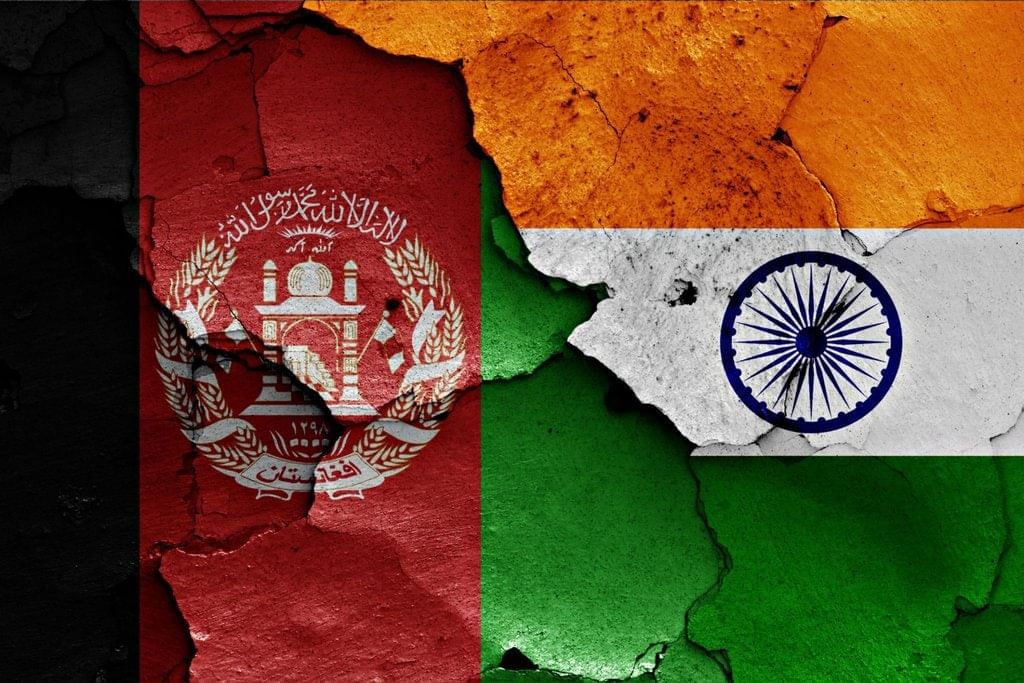 Why in News?
Why in News?
Recently, during the BIMSTEC Summit in Bangkok, India’s Prime Minister and Bangladesh’s Chief Adviser held their first high-level discussions since the change in Dhaka's regime.
About India-Bangladesh Relations
Political and Strategic Cooperation
- There are about 70 ongoing bilateral institutional mechanisms between India and Bangladesh, covering various areas such as security, trade, power, transport, defense, rivers, and maritime affairs.
- India has been a consistent partner in supporting Bangladesh’s infrastructure, security modernization, border management, and counter-terrorism efforts.
Trade and Economic Partnership
- Bangladesh is India’s largest trade partner in South Asia, while India is Bangladesh’s second-largest trade partner in Asia.
- In FY 2023-24, bilateral trade reached USD 14.01 billion, with Bangladesh exporting USD 1.97 billion worth of goods to India.
- Key developments include duty-free access for Bangladeshi goods to Indian markets under SAFTA, the establishment of border haats and integrated check posts, and investments in power, transport, and logistics.
Connectivity and Infrastructure
- Railway Connectivity: Several railway links have been established, including Agartala – Akhaura and Haldibari – Chilahati. Trains like the Maitri Express and Bandhan Express operate between the two countries.
- Port Connectivity: The Agreement for the usage of Chittagong and Mongla Ports was operationalized in 2023, facilitating transit cargo between Northeast India and mainland India.
- Inland Waterway Transport: Development under the Protocol on Inland Water Transit and Trade (PIWTT) has been ongoing.
Energy Cooperation
- Joint ventures like the India-Bangladesh Friendship Pipeline (IBFPL) have been inaugurated for diesel export from India to northern Bangladesh.
- There is ongoing collaboration on renewable energy projects, including solar and hydroelectric power.
Cultural and People-to-People Ties
- Cultural exchanges, celebrations like Maitree Diwas, and academic scholarships reinforce the common linguistic and cultural bonds between India and Bangladesh.
Key Regional Groupings Common To India and Bangladesh
- South Asian Association for Regional Cooperation (SAARC):. regional intergovernmental organization and geopolitical union in South Asia.
- BIMSTEC: The Bay of Bengal Initiative for Multi-Sectoral Technical and Economic Cooperation (BIMSTEC) aligns with India’s ‘Neighbourhood First’ and ‘Act East’ policies.
- Bangladesh-Bhutan-India-Nepal Initiative (BBIN): Currently, India, Bangladesh, and Nepal are working together on this initiative, as Bhutan has opted out of implementation.
- Bangladesh-China-India-Myanmar Economic Corridor (BCIM): Part of China’s Belt and Road Initiative (BRI) framework, this corridor aims to improve trade and connectivity among the four nations. While Bangladesh supports the corridor, it is mindful of India’s reservations.
- Indian Ocean Rim Association (IORA): Focused on maritime security, blue economy, disaster risk management, and trade, this association includes countries from the Indian Ocean Rim.
- South Asia Subregional Economic Cooperation (SASEC):. program under the Asian Development Bank (ADB), SASEC includes India, Bangladesh, Nepal, Bhutan, Sri Lanka, Maldives, and Myanmar.
Key Concerns and Challenges
- Border Security: The 4,096.7 km porous border, the fifth-longest in the world, is a hotspot for illegal crossings, smuggling, and trafficking. Recent clashes between border guards have heightened tensions, necessitating enhanced cooperation.
- Teesta River Dispute:. long-standing conflict over the fair sharing of the Teesta River’s water, with Bangladesh seeking a greater share. The Joint Rivers Commission, which oversees this, has not met since 2010.
- China’s Growing Influence in Bangladesh: Bangladesh’s deepening ties with China in infrastructure and defense raise strategic concerns for India, as it perceives this as a potential dilution of its influence in the region.
- Cross-Border Migration and Demographic Shifts: Historical and undocumented migration from Bangladesh to Indian states like Assam and West Bengal is a politically sensitive issue.
- Minority Rights: India has raised concerns over the safety of minorities in Bangladesh, particularly the Hindu community. Bangladesh’s interim government asserts its commitment to addressing these concerns while maintaining its sovereignty.
- NRC and Citizenship Amendment Act (CAA): India’s implementation of the National Register of Citizens (NRC) in Assam and the CAA has sparked fears of a potential influx of Bengali-speaking Muslims into Bangladesh.
- Trade Imbalances and Non-Tariff Barriers: Bangladesh has long complained about non-tariff barriers imposed by India and the slow progress in granting duty-free access to more Bangladeshi goods.
Way Forward
- Strengthening Dialogue: Regular high-level talks can enhance mutual understanding and address contentious issues. The Coordinated Border Management Plan (CBMP) has improved patrolling and joint efforts to reduce border friction.
- Promoting Inclusivity: Prioritizing the welfare of marginalized communities is essential for both nations, ensuring their safety and inclusion in development efforts.
- Diversifying Partnerships: Bangladesh can explore partnerships beyond India to assert its independence, while India can recalibrate its approach to avoid perceptions of favoritism.
Conclusion
Bangladesh-India relations are at a critical juncture, requiring both nations to navigate complex challenges with diplomacy and pragmatism. By fostering dialogue, promoting inclusivity, and diversifying partnerships, they can pave the way for a stronger and more resilient bilateral relationship.
GS1/ Geography
Pamban Bridge
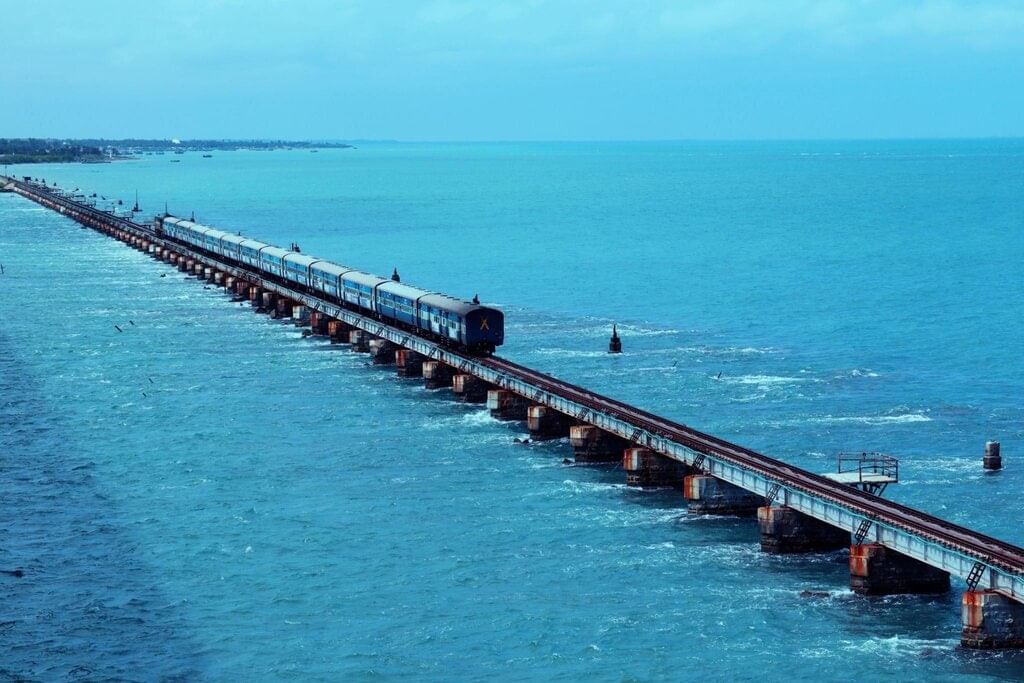 Why in News?
Why in News?
Prime Minister Narendra Modi is set to inaugurate the new Pamban Bridge, which will replace the old structure that has stood for over a century.
Historical Linkages
- The Pamban Bridge, spanning the ocean, links Rameswaram to mainland India. Originally built in 1914, it was India’s first sea bridge, vital for trade and pilgrimage.
- The old bridge withstood the 1964 tsunami, which tragically claimed a train, but it was severely damaged. It was later repaired by the famous engineer E. Sreedharan, thanks to the assistance of local fishermen.
- The new bridge addresses the old bridge's limitations, ensuring better durability, enhanced maritime navigation, and future readiness. Its goal is to boost regional connectivity and foster economic growth.
New Bridge
- Rail Vikas Nigam Limited (RVNL), a public sector undertaking under the Ministry of Railways, constructed the New Pamban Bridge.
- The bridge features a 72.5-meter lift span capable of rising 17 meters to allow ships to pass.
- It is 3 meters higher than the old bridge and is designed to support heavy freight trains and advanced semi-high-speed trains like Vande Bharat.
- Spanning 2.08 kilometers, the bridge is expected to last 58 years.
- As India’s first Vertical Lift Railway Sea Bridge, it is built with advanced materials to endure harsh marine conditions.
Significance
- The old bridge was crucial for trade, especially with Sri Lanka, and survived tough conditions like the 1964 tsunami.
- The restoration of the old bridge in 1964 by Sreedharan was a remarkable feat, completed in just 46 days.
- The new bridge upholds the tradition of facilitating trade and pilgrimage while offering a modern solution to the operational issues of corrosion and high maintenance faced by the old bridge.
GS2/ International Relations
Ottawa Convention
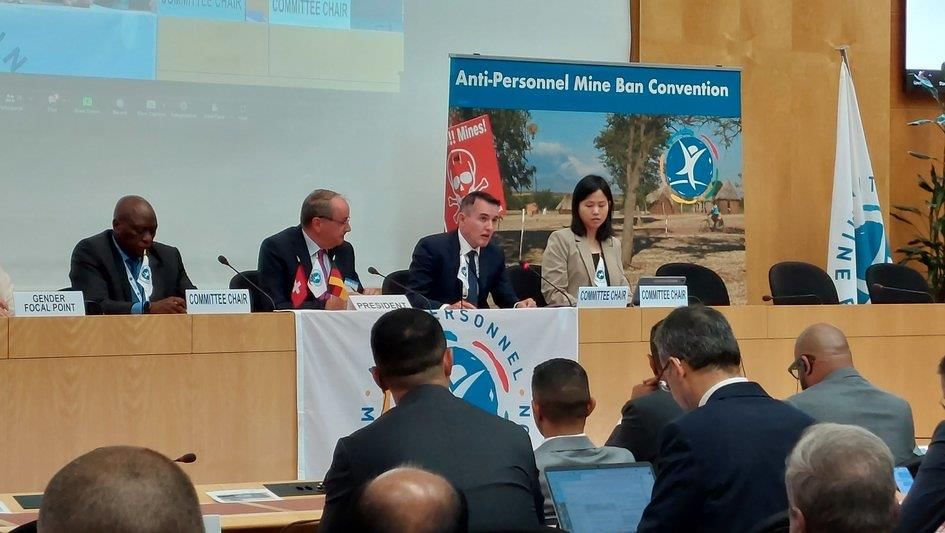 Why is it News?
Why is it News?
Poland, Finland, and all three Baltic states have announced plans to withdraw from the 1997 Ottawa Convention banning anti-personnel landmines, citing growing security threats from Russia.
- Countries leaving the treaty can resume the production, stockpiling, and use of landmines.
Ottawa Convention
Convention on the Prohibition of the Use, Stockpiling, Production, and Transfer of Anti-Personnel Mines and on their Destruction
- International Agreement: The Ottawa Convention is an international treaty that aims to ban the use, stockpiling, production, and transfer of anti-personnel landmines, as well as to promote their destruction.
- Adoption and Implementation: The convention was adopted in 1997 during a diplomatic conference in Oslo and was later opened for signature in Ottawa. It officially came into force on March 1, 1999.
Progress
- Reduction in Production and Use: The Ottawa Convention has led to a significant decrease in the production and use of anti-personnel landmines worldwide.
- Destruction of Stockpiled Mines: Over 40 million stockpiled anti-personnel mines have been destroyed as a result of the treaty.
- Assistance for Affected Communities: The convention has facilitated assistance for survivors of landmine incidents and for communities affected by landmines. This includes support for clearing mine-contaminated areas.
- Decline in Casualties: Due to the efforts under the Ottawa Convention, there has been a substantial decline in casualties caused by anti-personnel landmines.
Importance
- Global Mine Clearance: The Ottawa Convention has played a crucial role in advancing global mine clearance efforts, making previously dangerous areas safe for habitation and use.
- Victim Assistance: The treaty has helped frame victim assistance in the broader context of disability, ensuring that survivors receive the necessary support and rehabilitation.
- Safer Land Use: By contributing to mine clearance and victim assistance, the Ottawa Convention has facilitated safer and more productive land use in regions previously affected by landmines.
Did You Know?
- Civilian Impact: Anti-personnel landmines have a disproportionate impact on civilians, with over 80% of victims being non-combatants.
- Ukraine's Situation: The United Nations reported that Ukraine became the most mined country in 2024, resulting in over 1,200 civilian casualties due to landmines.
- Consideration of Withdrawal: Some countries, like Lithuania, are contemplating withdrawing from the 2008 Convention on Cluster Munitions, another contentious weapon that has been utilized in Ukraine’s defense.
|
38 videos|5258 docs|1111 tests
|





















